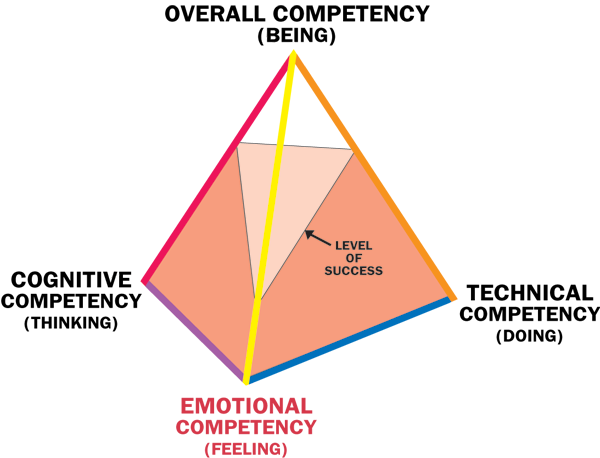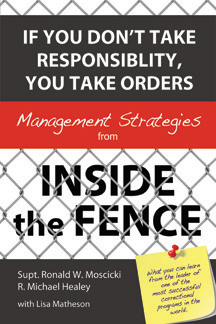Life Skills Competencies


On the illustration to the right, the tetrahedron is used to provide a
visual representation of our competencies:
- Overall (spiritual)
- Cognitive (mental/thought)
- Technical (physical/action)
- Emotional (feeling)
The dictionary defines tetrahedron as a triangular pyramid. The tetrahedron is a basic, simple structure which can be found in every living thing, everywhere in nature, including our DNA, and it is the smallest stable structure in the universe. It is also used as the foundational structure for all Social Synergetics™ methodologies.
The top of the illustration represents the highest level of overalll competency. Contributing to each individuals’ level of overall competency is the level at which they are competent in the three contributing factors shown as the base of the tetrahedron: mental, physical, and emotional skills. Picture an individual’s overall competency as the space held within the four sides of the tetrahedron. To arrive at the highest level of overall competency, you must be highly competent in all three areas.
In traditional business and educational environments, substantial emphasis is placed on the physical and mental areas of competency:
- Are you physically able to do the job and how well?
- Are you able to think about what you are doing strategically, evaluating cause and effect as they relate to efficiencies?
The question, though, is, even if a person is physically capable of doing the job and has a high IQ (and, therefore, the mental capabilities) are they guaranteed to be operating at the highest level of competency possible? What if they were also able to:
- talk to other people with confidence and ease?
- express their points of view clearly and rationally?
- choose productive emotional response to any situation?
- perform with ease as part of a team?
- remain calm in chaotic and changing situations?
- manage priorities?
- learn using intrinsic motivation factors – what's truly important to them – rather than being extrinsically influenced by what others think?
- be aware of what their emotions are and where they are coming from? > become aware of emotional responses in others, even those that are subtle?
- resolve conflict in a calm, balanced manner?
- learn to dissipate and diffuse emotions in others?
- easily build supportive bonds within their group?
The Importance of Emotional Competency
Given that emotional competency is equally important as mental and physical skills, the percentage of the tetrahedron filled with the levels of a person’s combined competencies (which effectively rates their overall competency level)? ... 30% .... 40% ... 75%?In today’s world, high physical and mental competencies are no longer enough, as they may have been in, for example, the Industrial Era. If we are very low on the emotional competency scale, our overall competency is sacrificed and our ability to grow and succeed as individuals and within organizations is severely compromised.
At the accelerating rate within which we are experiencing change, today and tomorrow can be completely different. To be successful and live and work harmoniously in society, each one of us must have a level of emotional competency which will support us in responding responsibly to whatever situation we are presented with and the socio-emotional skills to move through the situation with minimum conflict and maximum ease.
Social Synergetics™ can help you, your team, or your organization increase overall competencies and get better results. Contact us to learn more.


